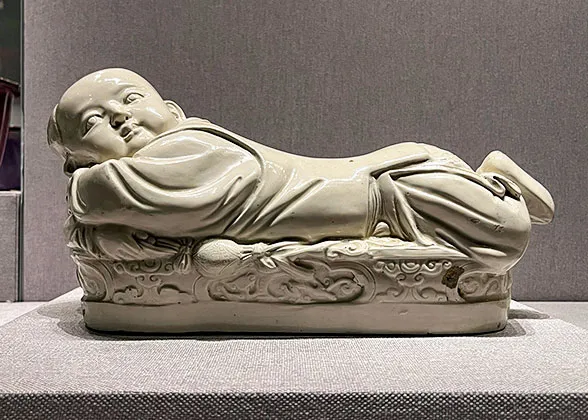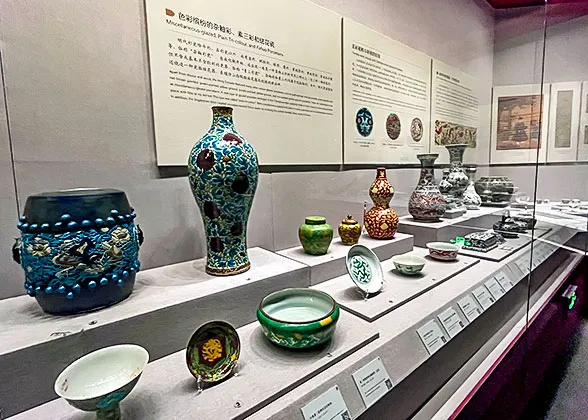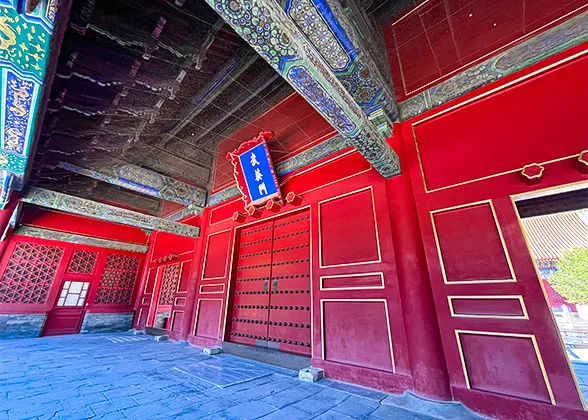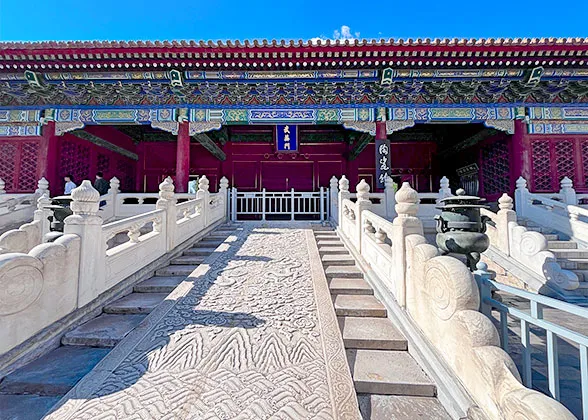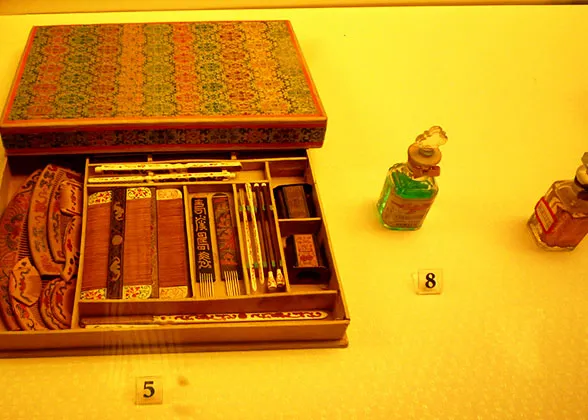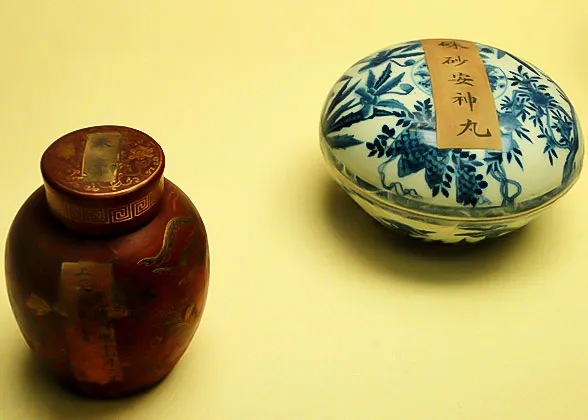Hall of Martial Valor (Wuyingdian)
Nestled in southwest of the outer court of the Forbidden City, the Hall of Martial Valor (Wuyingdian), despite its military-sounding name, mainly functioned culturally in the past, notably as the royal printing house for significant works from 1680 to 1840. From a cultural venue to the Ceramics Gallery today, it has undergone a history full of ups and downs.  Residence for Fasting & Abstinence Prior to Sacrifice
Residence for Fasting & Abstinence Prior to Sacrifice
 Venue for Imperial Summons
Venue for Imperial Summons  Emperor Li Zicheng: Reigned here for a Couple of Days
Emperor Li Zicheng: Reigned here for a Couple of Days
 Regent Dorgon & Emperor Shunzhi: Worked here Temporarily Amidst Repairs
Regent Dorgon & Emperor Shunzhi: Worked here Temporarily Amidst Repairs  Empeor Kangxi: Stayed here Briefly Due to Renovations
Empeor Kangxi: Stayed here Briefly Due to Renovations
 From Glory to Ashes: Unfortunate End of China's Greatest Movable Type Sets
From Glory to Ashes: Unfortunate End of China's Greatest Movable Type Sets
 Room of Bathing Virtue: Unique Turkish Bathroom
Room of Bathing Virtue: Unique Turkish Bathroom  Jitongchu: Earliest Official Fire Brigade in the Forbidden City
Jitongchu: Earliest Official Fire Brigade in the Forbidden City
 Eastern Side Room of the Main Hall: Western Medical Laboratory
Eastern Side Room of the Main Hall: Western Medical Laboratory
History of the Hall of Martial Valor
1420~1643 in Ming Dynasty
In 1420, the Hall of Martial Valor built up and became a sanctuary for emperors. Before performing major sacrificial rituals, they would fast and abstain here, showing their utmost respect for the gods and ancestors. During the 3 to 5-day stays, they also attended to state affairs. By 1521, this role was transferred to the Hall of Literary Glory (Wenhuadian).
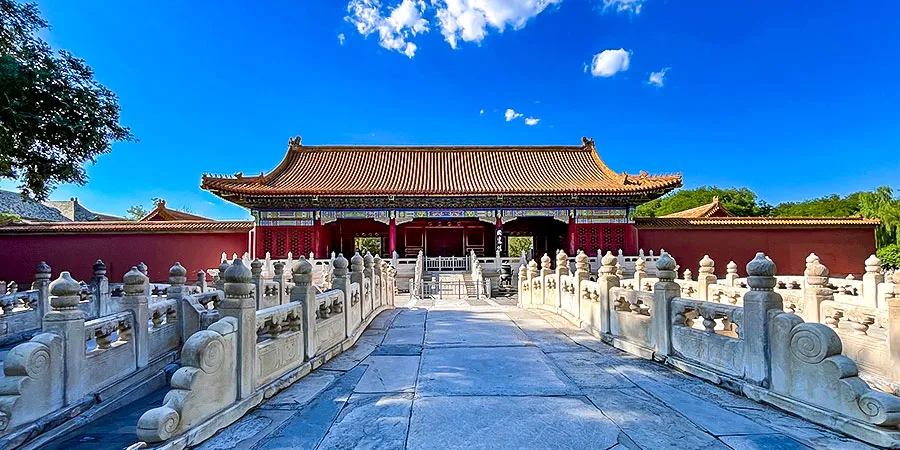 |
| Hall of Martial Valor |
Between 1521 and 1643, the Hall of Martial Valor transformed from a place of solemn preparation to a recreational place of imperial summons. Here, emperors would gather artists, poets, and other creative minds. They would share their talents, blending entertainment with enlightenment, and enriching the emperor's cultural life.
Ming-Qing Transition (1644): Temporary Power Center
In 1644, Li Zicheng, the peasant rebel leader, captured the Forbidden City. Due to the devastation of the main halls during the war, he set up his regime here.
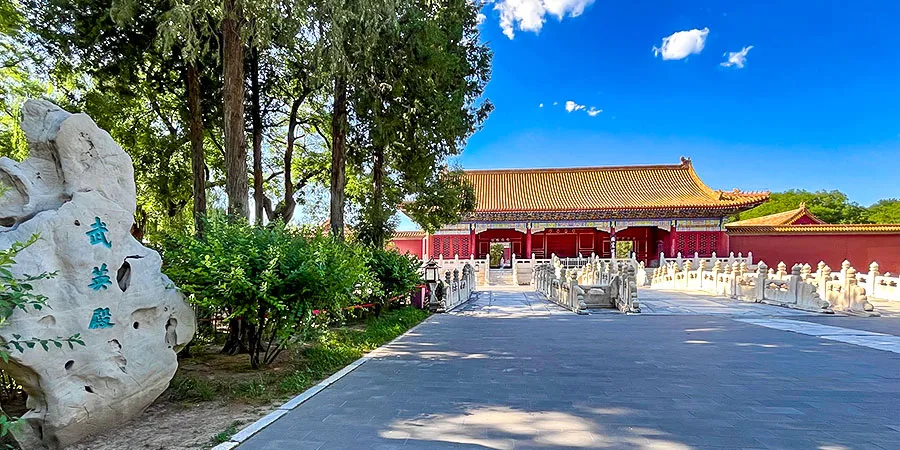 |
| Hall of Martial Valor |
However, the army slacked off so quickly that they couldn't fight against the Qing armies, resulting in a hasty enthronement in the Hall of Marital Valor on April 29 and a withdrawal the next day. Before leaving, they set fire to the Forbidden City.
The Hall of Martial Valor fortunately escaped from the flames that ravaged other palaces. This is why, upon the regent Dorgon's arrival in Beijing in May 1644, he chose to use it as his workplace while the other palaces were being repaired.
Dorgon remained there until September. Later, when Emperor Shunzhi (reigning 1643~1661) ascended the throne at the Gate of Supreme Harmony in October, he also briefly governed from this hall.
In February 1669, Emperor Kangxi (reigning 1661~1722) temporarily resided in the Hall of Martial Valor due to renovations at his workplace the Hall of Supreme Harmony and his residence Palace of Heavenly Purity. He remained there until November, when the Palace of Heavenly Purity (Qianqinggong) was restored.
1680~1840 in Qing Dynasty: Royal Publishing House
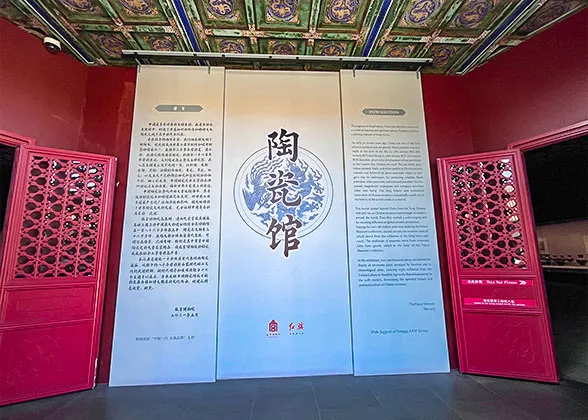 |
| Upon Entering Hall of Martial Valor |
From 1680 to 1840, during the Qing Dynasty, the Hall of Martial Valor stood out as the preeminent royal publishing house, all repurposed into spaces for compiling, engraving, printing, and storing books of exceptional quality. These books were known as the "Hall of Martial Valor Editions", highly esteemed for their craftsmanship.
During the Yongzheng Emperor's reign (1722~1735), a remarkable feat was accomplished: the printing of Ancient and Modern Integrated Collection of Books (Gu Jin Tu Shu Ji Cheng) using movable copper type. This colossal work spans 10,000 volumes, compiled from numerous historical literature.
In 1772, Emperor Qianlong assembled over 300 scholars to categorize and compile a treasure trove of historical documents over a decade, fruiting Complete Library in Four Sections (Si Ku Quan Shu), a monumental 80,000-scroll collection recording over 30,000 books of 3,500 varieties, which still holds academic value today.
Alongside the grand achievements above, there were two sets of movable type in the Hall of Martial Valor—over 200,000 copper characters and 250,000 wooden ones, the largest in ancient China. Unfortunately, their fate was far from glorious.
In 1744, the supervisors, who illicitly sold part of the copper type and feared the discovery of their theft, melted down the copper characters into coins with the excuse of easing the financial burden. Even worse, the wooden ones were burned as firewood by guards in late 19th century.
In 1869, the Hall of Martial Valor was damaged by a fire, books all destroyed. In the same year it was reconstructed.
In 1869, the Hall of Martial Valor was damaged by a fire, books all destroyed. In the same year it was reconstructed.
1914~1948: Antiquities Exhibition Hall, First Opened to the Public
On February 4, 1914, the Outer Court of the Forbidden City transformed into the Antiquities Exhibition Hall. On October 10 of the same year, the Hall of Martial Valor, equipped with the Forbidden City's first telephone and water supply system, officially opened its doors as the main exhibition hall, followed by other Outer Court palaces.
2005~2017: Hall of Calligraphy and Painting
From 2005 to 2017, the exhibitions of calligraphy and painting from various dynasties collected by the Forbidden City were regularly held in the Hall of Martial Valor.
2018 to Now: Ceramic Gallery
|
|
The Hall of Martial Valor has served as the Ceramic Gallery of the Forbidden City from 2018, exhibiting more than 1000 pieces of pottery treasures, including almost all the important pottery breeds in its development.
Layout
The Hall of Martial Valor area is complex of 12,000 square meters. The main hall facing south is a single-eaved structure with yellow glazed tiles. The back is the Hall of Respect and Thinking (Jingsidian) in similar architectural style as the main hall in the front. They both form a “工” shape with a connecting lobby.
The halls on the east and west sides are the Hall of Condensed Wisdom (Ningdaodian) and Hall of Radiant Splendor (Huanzhangdian), totaling 63 rooms.
In the northeast of the complex is the Room of Lasting Longevity (Hengshouzhai) and in the northwest the Room of Bathing Virtue (Yudetang).
|
|
Hidden Architectural Treasures of Hall of Martial Valor
Room of Bathing Virtue features a distinctive rear bathroom with a circular dome. Covered in white glazed tiles, this exotic bathroom boasts windows at the top for ventilation and an iron fireplace in the back wall for heating water. It was used by the emperor for fasting and bathing rituals, and also for bathing the emperor's body after his death.
Interestingly, there are rumors that Emperor Qianlong specially designed this bathroom to show love to his Uyghur concubine, Xiangfei, mimicking the style of bathrooms in her hometown. Therefore, it's also known as "Xiangfei's Bathroom".
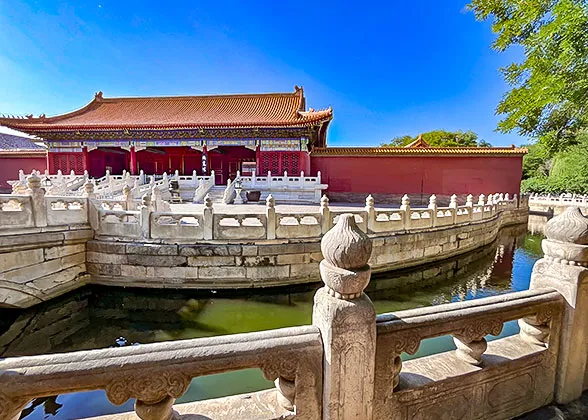 |
| Martial Valor Hall & Inner Golden Water River |
In 1889, a fire-fighting force Jitong Division was officially established. This elite group of 200 specially trained soldiers was stationed south of the Hall of Martial Valor.
Equipped with an ancient device called the Jitong. Resembling a combination of a fire extinguisher and a water squirt gun nowadays, they were tasked with pumping water from large tanks and directing it precisely onto flames.
Emperor Kangxi (1654~1722), a ruler with a keen interest in Western science and medicine, transformed the room on the eastern end of the main hall into a laboratory. Here, he conducted groundbreaking experiments, including trials for smallpox vaccination.
The room was also filled with an array of Western medicines, wines, floral dew, and other artifacts from across the globe, reflecting Kangxi's commitment to exploring and understanding the world beyond his borders.
|
|
Go east back to the Duanhong Bridge and Taihemen Square, and continue the tour along the central axis.
Go west to see the Hall of Embodied Treasures (Baoyunlou) exhibiting the development history of the Palace Museum.
Go north to visit Garden of Compassion and Tranquility (Cining Garden).
Go south to South Warehouse to visit Furniture Gallery.
How to visit the Forbidden City
- Last updated on Aug. 28, 2025 by Jally Zhang -
